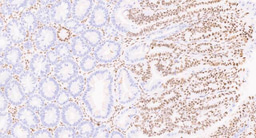World Breastfeeding Week 2025
Published in Public Health
Enhancing breastfeeding and reducing neonatal mortality are vital to achieving the Sustainable Development Goals [1]. The World Health Organization recommends donor human milk (DHM) as the next alternative food source when a mother’s own milk (MOM) is temporarily unavailable [2]. Many women use PDHM from a couple of feeds to a couple of days, as a temporary ‘bridge’ when establishing MOM supply or whilst infant feeding issues are resolved. The use of PDHM as a long-term feeding option is less common and requires much higher volumes of human milk as well as continued engagement with human milk banking services. Reasons for long-term PDHM use include infant prematurity, maternal low/absent milk supply, supporting breastfeeding difficulties, maternal cancer/mastectomy, and maternal medication use or other health issues [3]. In 2014, the first human milk bank (HMB) was opened in New Zealand, with six active HMBs across the country [4]. In this blog post, we will highlight the findings of a study investigating the lived experience of six mothers who used PDHM from Whāngai Ora Milk Bank on a long-term basis (equal to or greater than two weeks). Narrative enquiry methodology was used to illustrate lived experiences, and human ethics approval was obtained (Ohu Matatika 1 23/23). Two of the themes emerging from women’s experiences were:
Theme one - Feeling inadequate, but coming to acceptance
Some participants described the preconceived idea that women’s bodies should automatically know how to make enough milk for a baby. When their own experience challenged this societal norm, women described feeling “less of a mother” for not “living up” to this expectation. Kaia expressed a feeling of diminished self-worth and inadequacy when she was unable to fulfil the job of breastfeeding. Additionally, she compared herself to other women who could produce breast milk and conveyed a sense of loss from their ability to do it for her baby, when she was unable to:
“It definitely made me feel less as a parent...It definitely wasn't easy. Knowing that, you know, someone else or some other people were able to feed my child, and I wasn't able to.” (Kaia)
However, over time, long-term users reported reaching a level of acceptance of their own milk supply and what they could or could not produce for their baby. For Jill, this acceptance involved her realising that she needed to regain more of her own health to support her baby:
“I was like, “I'm never going to be able to feed her enough by myself”. And it's just like, physically, it was getting really hard and mentally, it was really hard too. So, we just made the decision to cut the co-feeding and just go with the donor milk.” (Jill)
Theme two - PDHM supports the postpartum journey
Mother’s resolve to keep using PDHM long-term was described as stemming from a distrust of infant formula and a strong mindset of not wanting to use it. Some mothers felt this was because they had heard breast milk was the best infant feeding option, whereas others described a true fear of the ‘harms’ of infant formula or an unreliable supply.
“There's been a few too many shortages in formulas, so I didn't want to become reliant on something that I couldn't guarantee was going to be available.” (Farah)
Where PDHM was available, women could maintain their resolve to feed in line with their values, which relieved the stress and effort of constantly trying to establish breastfeeding. Farah described how using PDHM supported her and her husband as it allowed him to take on some of the feeding responsibilities and tube feed their baby while in the neonatal unit. His ability to take on feeding tasks assisted Farah’s mental health and provided bonding opportunities for him. She recognised this same outcome could essentially be achieved through using infant formula, however, she found long-term PDHM more personally acceptable. She expressed gratitude for the availability of PDHM due to her feelings of uncertainty around the formula.
“Having the donor milk, I think, took a lot of stress off me. I know the nurses could have fed him formula during the night as well, but my hubby, he could tube feed him. I know that they would have done the same with the formula, but I think just having the breast milk as an option made me feel less stressed. It was just one less thing to be worried about. I think in the back of my mind, I would have worried a little bit more about formula, and I don't think it's pragmatic and I don't know why I just would have.” (Farah)
Nourishing hope: Long-term support with PDHM
The voices from these long-term users of PDHM convey complex emotions around how they view themselves as mothers and how PDHM supported them in their postpartum journey. Seagram & Daniluk (2008) explain how societal pressures create a narrative of what a ‘good’ mother looks like, which can be internalised by women during pregnancy or even before[5]. Part of this narrative implies a desire to breastfeed and associates a positive breastfeeding experience with ‘excelling’ as a mother. When a mother is unable to meet these expectations of herself, the result can be a pervasive loss of self, inclusive of self-identity and autonomy[6, 7]. In our study, women expressed gratitude and relief at being able to have a feeding option that aligned with their preference to feed their baby breastmilk. Long-term PDHM users also appreciated that partners and other support people can also contribute to feeding. Our study reveals the demand for positive uptake of PDHM where it is available. For long-term users, human milk banks provide holistic and compassionate care that values the emotional and social dimensions of infant feeding. This highlights the need to support milk banks’ infrastructure, integrate it into the healthcare system, and foster equitable access to protect, promote, and support women in accessing this invaluable resource for strengthening their breastfeeding journey.
References:
- Israel-Ballard K, LaRose E, Mansen K: The global status of human milk banking. Matern Child Nutr 2024, 20 Suppl 4(Suppl 4):e13592.
- Geneva WHO: WHO recommendations for care of the preterm or low-birth-weight infant. 2022.https://www.who.int/publications/i/item/9789240058262
- Brown A, Shenker N: Receiving screened donor human milk for their infant supports parental wellbeing: a mixed-methods study. BMC Pregnancy and Childbirth 2022, 22(1):455.
- Harris S, Bloomfield FH, Muelbert M: Formal and informal human milk donation in New Zealand: a mixed-method national survey. International Breastfeeding Journal 2024, 19(1):61.
- Seagram S, Daniluk JC: “It Goes with the Territory”. Women & Therapy 2002, 25(1):61-88.
- Frankhouser TL, Defenbaugh NL: An Autoethnographic Examination of Postpartum Depression. The Annals of Family Medicine 2017, 15(6):540-545.
- Constantinou G, Varela S, Buckby B: Reviewing the experiences of maternal guilt - the "Motherhood Myth" influence. Health Care Women Int 2021, 42(4-6):852-876.
Follow the Topic
-
International Breastfeeding Journal

This journal encompasses articles about breastfeeding, focusing on nursing, midwifery, paediatric, obstetric, family medicine, public health, immunology, physiology, sociology and many other topics.
Related Collections
With Collections, you can get published faster and increase your visibility.
Donor Human Milk in the 21st Century: Policy, Practice, Innovation, Equity, and Impact
Breastfeeding is crucial for both the baby and the mother. It has nutritional, developmental, economic, and environmental impacts on the family, health system, and the planet. Donor human milk is a critical resource for infants whose mothers’ own milk is not available due to various reasons. As the importance of donor human milk continues to grow globally, there is a need for comprehensive research and discussion on best practices, clinical and public health impacts, ethical considerations, and innovative approaches in this field.
This special collection aims to bring together cutting-edge research, reviews, opinions, and case studies to advance our understanding and support the development of donor human milk initiatives worldwide.
This Collection supports and amplifies research related to SDG 1, No Poverty, SDG 2, Zero Hunger, SDG 3, Good Health and Well-Being, SDG 5, Gender Equality, SDG 13, Climate Action and SDG 17, Partnership for the Goals .
We recognize that many key stakeholders may not have access to such resources and are committed to supporting participation in this issue wherever resources are a barrier. For more information about what support may be available, please visit OA funding and support, or email OAfundingpolicy@springernature.com or contact the Editor-in-Chief.
Publishing Model: Open Access
Deadline: Feb 19, 2026
Becoming Baby-friendly: What works?
International Breastfeeding Journal is calling for submissions to our Collection on ‘Becoming Baby-friendly: What works?’. This Special Collection aims to understand the altruism, strategies and processes that underpin a country or organisation’s decision to implement and successfully gain ‘Baby-friendly’ accreditation.
The collection welcomes a diverse range of contributions, including primary research articles, systematic reviews, policy papers, case studies and commentaries. Authors are encouraged to present novel insights, empirical findings, and practical recommendations that can inform policy decision-making and program development, using a strengths-based approach.
The Collection invites contributions that explore a wide range of research areas, including but not limited to:
1. Baby-friendly Hospital Initiative
2. Neo – BFHI
3. Baby-friendly communities
4. Baby-friendly primary care practices
5. Baby-friendly pharmacies
6. Baby-friendly universities
This Collection supports and amplifies research related to SDG 3, Good Health and Well-Being.
We are committed to supporting participation in this issue wherever resources are a barrier. For more information about what support may be available, please visit OA funding and support, or email OAfundingpolicy@springernature.com or contact the Editor-in-Chief.
Publishing Model: Open Access
Deadline: May 01, 2026





Please sign in or register for FREE
If you are a registered user on Research Communities by Springer Nature, please sign in
This is an excellent piece of qualitative research completed by Dakota Skyes as part of the Master of Public Health Thesis. Dr Ying Jin and Associate Professor Linda Murray from Massey University, New Zealand, supervised her. This blog post added to the current literature on the impact of long-term users of pasteurised donor human milk on their breastfeeding journey - "women in accessing this invaluable resource for strengthening their breastfeeding journey".